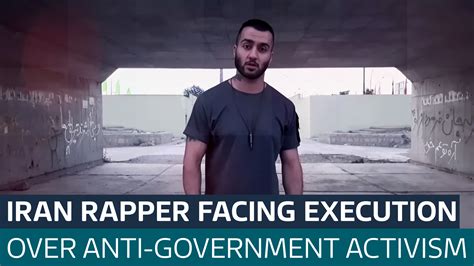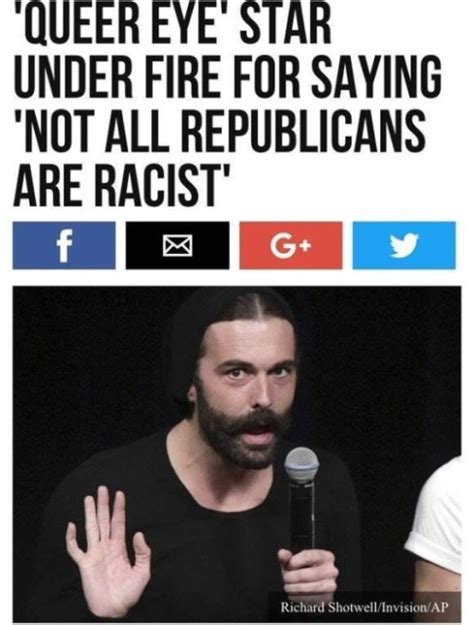
Once a vocal supporter of Iranian hardliners, rapper Amir Tataloo now faces the death penalty in Iran on charges of blasphemy and collaborating with enemy states, marking a dramatic reversal for the controversial artist.
Amir Tataloo, whose real name is Amir Hossein Maghsoudloo, faces execution in Iran following accusations of blasphemy and collaboration with hostile governments. The rapper, previously known for his support of the Islamic Republic and its ultraconservative former president, Ebrahim Raisi, now finds himself in a precarious situation, highlighting the unpredictable nature of Iran’s political and social landscape.
Tataloo’s case has drawn international attention, underscoring concerns about freedom of expression and the application of capital punishment in Iran. His transformation from a state-endorsed artist to a condemned prisoner reflects the complexities of navigating artistic expression within a restrictive political system. The details of the charges against him remain somewhat opaque, but they reportedly stem from his musical content and online activities, deemed offensive to religious authorities.
Prior to his arrest in Turkey and subsequent extradition to Iran in December, Tataloo enjoyed a period of relative favor within the Iranian government. In 2015, he even met with Raisi, then a presidential candidate, during which Raisi expressed support for the rapper’s artistic endeavors and acknowledged his popularity among Iranian youth. This meeting, seen as an attempt by Raisi to broaden his appeal, solidified Tataloo’s image as a figure aligned with the ruling establishment. However, this alliance proved to be short-lived.
Tataloo’s music, often characterized by its explicit lyrics and unconventional themes, initially resonated with a segment of Iranian society seeking alternative forms of expression. His songs frequently addressed social issues, albeit in a manner that sometimes courted controversy. While some viewed him as a voice for the marginalized, others criticized his work for its perceived vulgarity and disregard for traditional values. This inherent tension in his artistic persona ultimately contributed to his downfall.
The specific allegations against Tataloo include blasphemy, a charge frequently used in Iran to suppress dissent and punish those deemed to have insulted Islam. The charge of collaborating with enemy states is equally serious and can carry the death penalty. These accusations likely stem from his activities while living outside Iran, where he reportedly engaged with individuals and organizations considered hostile to the Iranian government. The exact nature of this collaboration remains unclear, but Iranian authorities have presented it as evidence of his disloyalty.
Tataloo’s journey from government supporter to death row inmate exposes the precarious and often contradictory nature of artistic expression in Iran. His case underscores the risks faced by artists who attempt to challenge established norms or express dissenting views, regardless of their previous affiliations. It serves as a stark reminder of the limitations on freedom of expression within the Islamic Republic and the potential consequences for those who cross the regime’s red lines.
The rapper’s story is also a reflection of the broader political climate in Iran, where hardliners maintain a firm grip on power and are quick to silence any perceived threats to their authority. The recent crackdown on dissent, including the prosecution of artists and activists, highlights the regime’s intolerance of opposing viewpoints. Tataloo’s case is thus emblematic of a larger trend of repression and the suppression of artistic freedom.
Following his extradition, Tataloo was swiftly brought before the Iranian judiciary and charged with a range of offenses. His trial, which has been largely conducted behind closed doors, has been criticized by human rights organizations for its lack of transparency and due process. Concerns have also been raised about the fairness of the proceedings, given the political nature of the charges and the potential for government interference.
International human rights organizations such as Amnesty International and Human Rights Watch have condemned Tataloo’s prosecution and called for his immediate release. They have argued that the charges against him are politically motivated and violate his right to freedom of expression. These organizations have also urged the Iranian government to abolish the death penalty and to ensure that all prisoners are treated fairly and humanely.
The case of Amir Tataloo serves as a poignant illustration of the complex and often dangerous intersection between art, politics, and religion in Iran. His story is a cautionary tale for artists who seek to navigate the country’s restrictive political landscape, highlighting the risks of challenging established norms and expressing dissenting views. It also underscores the urgent need for greater protection of freedom of expression and human rights in Iran.
Tataloo’s music, while controversial, often reflected the sentiments and aspirations of a significant segment of Iranian youth. His songs addressed issues such as poverty, social inequality, and the challenges of daily life in Iran. While his lyrics sometimes courted controversy, they also resonated with many young Iranians who felt alienated from the ruling establishment.
The rapper’s rise to fame was largely fueled by social media, where he cultivated a large following and built a loyal fanbase. His online presence allowed him to bypass traditional media channels and connect directly with his audience. However, this same online presence also made him vulnerable to scrutiny by the Iranian authorities, who closely monitor social media activity and are quick to censor content deemed offensive or subversive.
Tataloo’s case has also sparked debate within Iran about the role of art and culture in society. Some Iranians argue that artists should be free to express themselves without fear of persecution, while others maintain that artistic expression should be subject to certain limitations, particularly when it comes to matters of religion and morality. This debate reflects the deep divisions within Iranian society over issues of freedom, censorship, and cultural identity.
The Iranian government’s treatment of Tataloo stands in stark contrast to its earlier embrace of the rapper as a potential ally. This shift in attitude underscores the regime’s willingness to discard even its former supporters when they are deemed to have crossed the line. It also highlights the inherent instability of any alliance between artists and political authorities in a repressive environment.
The international community has a crucial role to play in advocating for Tataloo’s release and in pressing the Iranian government to respect human rights and freedom of expression. Governments, international organizations, and civil society groups should continue to raise awareness about his case and to demand that he be treated fairly and humanely. They should also work to support other artists and activists who are facing persecution in Iran.
The outcome of Tataloo’s case will have significant implications for the future of artistic freedom in Iran. If he is executed, it will send a chilling message to other artists and activists and further embolden the regime to suppress dissent. Conversely, if he is released or his sentence is reduced, it could signal a potential shift in the government’s approach to freedom of expression and human rights.
The case of Amir Tataloo is a complex and multifaceted one, reflecting the broader challenges facing Iranian society. It is a story of ambition, betrayal, and the struggle for freedom of expression in a repressive environment. It is a story that deserves to be told and one that should serve as a reminder of the importance of defending human rights and artistic freedom around the world.
Expanded Context and Deeper Dive
Amir Tataloo’s case is not an isolated incident but rather a symptom of a larger pattern of repression in Iran. The Iranian government has a long history of suppressing dissent and violating human rights, particularly in the areas of freedom of expression, assembly, and religion. Artists, journalists, activists, and ordinary citizens who dare to challenge the regime’s authority often face arrest, imprisonment, torture, and even execution.
The Iranian judiciary, which is controlled by hardline clerics, is often used as a tool to silence dissent and punish those deemed to have violated the regime’s ideological principles. Trials are often conducted in secret, without due process, and with little regard for the rights of the accused. The death penalty is frequently used, even for non-violent offenses, and executions are often carried out in public.
The Iranian government’s human rights record has been consistently criticized by international organizations such as the United Nations, Amnesty International, and Human Rights Watch. These organizations have documented numerous cases of human rights violations in Iran, including arbitrary arrests, torture, unfair trials, and executions. They have also expressed concern about the lack of freedom of expression, assembly, and religion in the country.
The recent crackdown on dissent in Iran has been particularly severe, following widespread protests against the government’s economic policies and social restrictions. The protests, which began in late 2022, were met with a violent response from the security forces, resulting in the deaths of hundreds of protesters and the arrest of thousands more. Many of those arrested have been subjected to torture and other forms of ill-treatment, and some have been sentenced to death.
The Iranian government has accused foreign powers of instigating the protests and has used the unrest as a pretext to further tighten its grip on power. The regime has also intensified its efforts to censor the internet and control the flow of information, making it increasingly difficult for Iranians to access independent news and express their opinions online.
The case of Amir Tataloo is just one example of the many ways in which the Iranian government is suppressing dissent and violating human rights. His story serves as a reminder of the urgent need for greater international pressure on Iran to respect human rights and freedom of expression. It also underscores the importance of supporting Iranian artists, journalists, and activists who are working to promote democracy and human rights in their country.
Tataloo’s transformation from a hardliner supporter to a death row inmate also highlights the complex and often contradictory nature of Iranian politics. The Iranian political system is characterized by a constant struggle for power between different factions, including hardliners, reformists, and pragmatists. These factions often compete for influence over government policy and appointments, and their alliances can shift rapidly.
Tataloo’s initial support for the Iranian government was likely driven by a combination of factors, including his desire to gain official recognition and his belief that the government could help him advance his career. However, his support was also likely influenced by his own political views, which may have aligned with those of the hardliners on certain issues.
Over time, however, Tataloo’s views appear to have changed, perhaps as a result of his experiences living outside Iran and his exposure to different ideas and perspectives. His music also became increasingly critical of the government, which likely contributed to his downfall.
Tataloo’s case is a reminder that even those who initially support the Iranian government can fall out of favor if they are perceived to have crossed the line. It also highlights the importance of remaining vigilant and skeptical of any alliance between artists and political authorities in a repressive environment.
The international community should continue to monitor Tataloo’s case closely and to advocate for his release. It should also continue to press the Iranian government to respect human rights and freedom of expression. The future of artistic freedom in Iran depends on it.
The legal specifics surrounding Tataloo’s case are also worth exploring in greater detail. The charges of blasphemy and collaboration with enemy states are both vaguely defined under Iranian law, making them susceptible to arbitrary interpretation and application. This lack of clarity allows the authorities to target individuals based on their political views or artistic expression, rather than on concrete evidence of wrongdoing.
The Iranian legal system also lacks many of the safeguards that are considered essential in democratic societies, such as the right to a fair trial, the right to legal representation, and the right to appeal. Trials are often conducted in secret, without due process, and with little regard for the rights of the accused.
The use of the death penalty in Iran is particularly concerning. Iran is one of the world’s leading executioners, and the death penalty is often used for non-violent offenses, such as blasphemy, apostasy, and drug trafficking. The Iranian government has also been criticized for executing juveniles and for carrying out executions in public.
The international community has repeatedly called on Iran to abolish the death penalty and to reform its legal system to ensure that it meets international standards of fairness and due process. However, the Iranian government has consistently refused to do so, arguing that the death penalty is a necessary deterrent to crime and that it is consistent with Islamic law.
The case of Amir Tataloo highlights the urgent need for legal reform in Iran. The country’s vague and arbitrary laws, its lack of due process, and its frequent use of the death penalty all contribute to a climate of fear and repression. Until these issues are addressed, freedom of expression and human rights will remain under threat in Iran.
Furthermore, the impact of social media on Tataloo’s career and subsequent persecution cannot be understated. While social media provided him with a platform to reach a vast audience and express his views, it also made him a target for the Iranian authorities. The government closely monitors social media activity and is quick to censor content deemed offensive or subversive.
Tataloo’s online activities, including his music videos, his social media posts, and his interactions with fans, were all closely scrutinized by the authorities. Any perceived transgression, no matter how minor, could be used as evidence against him in court.
The Iranian government’s control over the internet is extensive. The government blocks access to many popular websites and social media platforms, and it monitors online communications for signs of dissent. It also employs an army of trolls and propagandists to spread misinformation and to harass and intimidate critics of the regime.
The case of Amir Tataloo highlights the challenges faced by artists and activists who use social media to express their views in Iran. While social media can be a powerful tool for communication and mobilization, it can also be a dangerous one. Individuals who use social media to challenge the government’s authority risk arrest, imprisonment, and even death.
In conclusion, Amir Tataloo’s case is a complex and tragic one that reflects the many challenges facing Iranian society. His story is a reminder of the importance of defending freedom of expression and human rights around the world. The international community must continue to monitor his case closely and to advocate for his release. It must also continue to press the Iranian government to respect human rights and to reform its legal system. The future of artistic freedom in Iran depends on it.
Frequently Asked Questions (FAQ)
-
What are the specific charges against Amir Tataloo?
Amir Tataloo is facing charges of blasphemy and collaborating with enemy states. These charges are based on his musical content, online activities, and alleged interactions with individuals and organizations considered hostile to the Iranian government. Specific details remain somewhat opaque, but authorities deem his actions and expressions as offensive to religious authorities and a threat to national security.
-
Why was Tataloo previously supported by some elements within the Iranian government?
Tataloo gained some support within the Iranian government, particularly from hardliners like Ebrahim Raisi, as part of an effort to broaden their appeal to younger generations. Raisi, during his presidential campaign, met with Tataloo and expressed support for his music, likely seeing him as a way to connect with Iranian youth. However, this support was short-lived as Tataloo’s controversial content and later activities were deemed unacceptable.
-
What international organizations are involved in Tataloo’s case, and what are they doing?
International human rights organizations such as Amnesty International and Human Rights Watch have condemned Tataloo’s prosecution and called for his immediate release. They argue that the charges against him are politically motivated and violate his right to freedom of expression. They are urging the Iranian government to abolish the death penalty and ensure fair and humane treatment for all prisoners. They also advocate for greater international pressure on Iran to respect human rights.
-
What impact could Tataloo’s case have on freedom of expression in Iran?
The outcome of Tataloo’s case will significantly impact freedom of expression in Iran. If he is executed, it would send a chilling message to other artists and activists, further discouraging dissent. Conversely, if he is released or his sentence is reduced, it could signal a potential shift, albeit a small one, in the government’s approach to freedom of expression, potentially offering a glimmer of hope for artists who seek to challenge established norms. A conviction and harsh sentencing would likely embolden the regime to suppress any form of expression deemed critical or subversive.
-
How did Tataloo’s use of social media contribute to his current situation?
Tataloo’s extensive use of social media played a dual role in his situation. On one hand, it allowed him to build a large following, bypass traditional media censorship, and connect directly with his audience. On the other hand, it made him highly visible and vulnerable to scrutiny by Iranian authorities. His online activities, including music videos, social media posts, and interactions with fans, were closely monitored, and any perceived transgressions were used as evidence against him, ultimately contributing to his arrest and prosecution.









